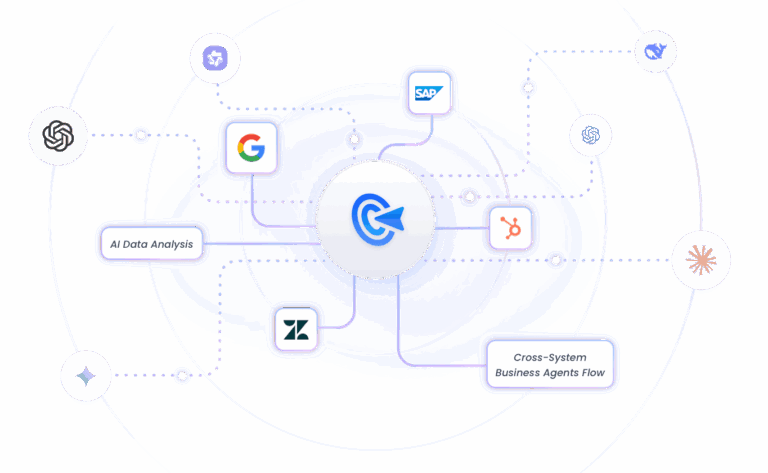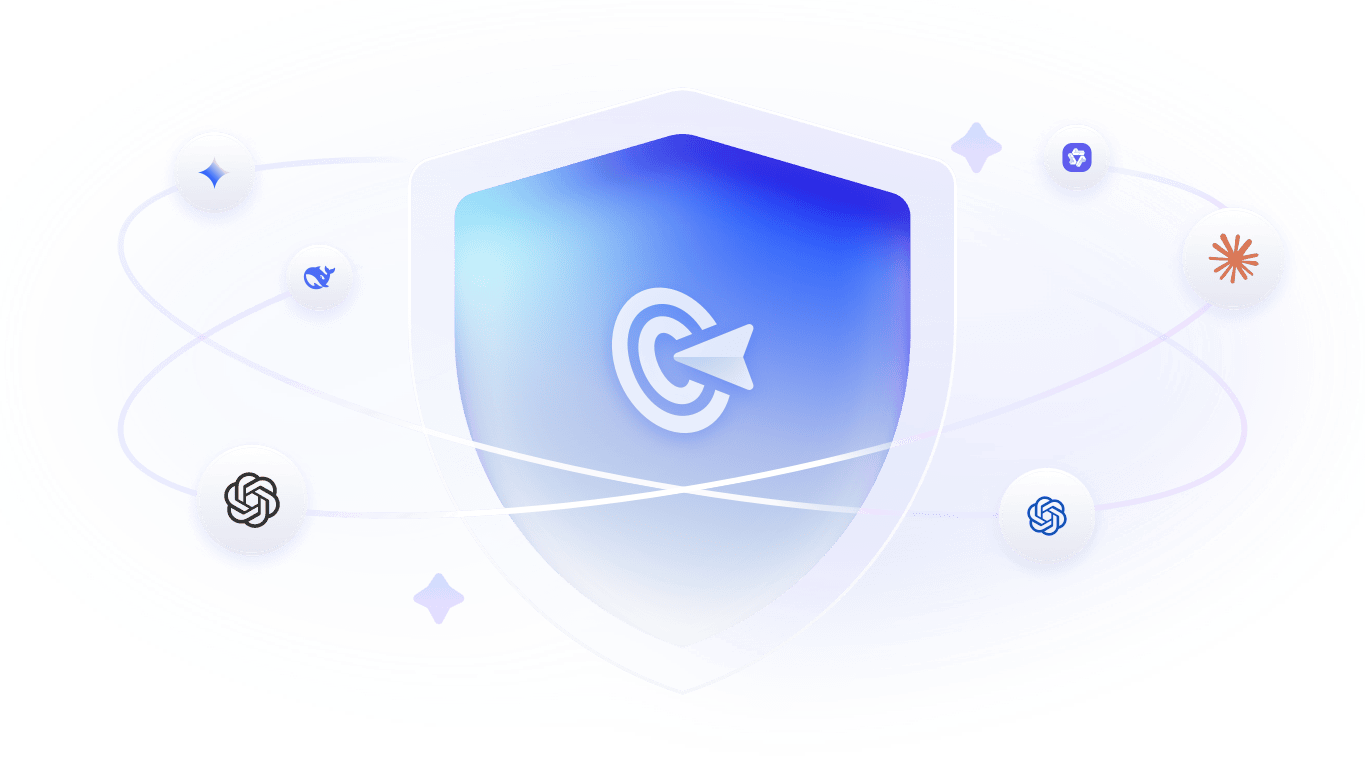- OWASP Top 10 LLM Security Risks and Best Practices (1200 words)
- 1. Prompt Injection
- 2. Sensitive Information Disclosure
- 3. Supply Chain
- 4. Data and Model Poisoning
- 5. Improper Output Handling
- 6. Excessive Agency
- 7. System Prompt Leakage
- 8. Vector and Embedding Weaknesses
- 9. Misinformation
- 10. Unbounded Consumption
- Pro Tip: Securing LLM Operations at Enterprise Scale with GoInsight.AI
- Conclusion
- FAQs
As large language models become embedded across enterprise systems, they bring both efficiency and exposure. Over 60% of companies using generative AI have already faced model misuse or data security incidents: LLM security has become a major concern.
To address these threats, the OWASP Foundation released the Top 10 Security Risks for LLM Applications. This article will explore each risk and outline practical best practices for secure deployment.

OWASP Top 10 LLM Security Risks and Best Practices
To strengthen LLM security, enterprises need a clear understanding of where the real risks lie. The following section will delve into each risk and their potential impacts.
1. Prompt Injection
Prompt injection is among the most common and critical risks for large language models. In this attack, malicious users manipulate inputs to override intended model behavior or gain access to unauthorized data. Such manipulations can bypass filters, execute hidden instructions, or trigger sensitive actions in connected systems, creating significant operational, compliance, and security risks for enterprises.
Best Practices:
- Enforce allowlists for valid commands and tokenize sensitive prompts to prevent misuse.
- Constrain model behavior according to defined roles and system limitations.
- Use monitoring and logging tools to detect anomalous inputs and unusual output patterns.
- Require human approval for high-risk actions or decisions involving sensitive data.
- Conduct rigorous simulation testing to ensure secure interpretation of inputs.
2. Sensitive Information Disclosure
LLMs may inadvertently leak confidential information from their primary training data when embedded in applications. This data may include conversation logs or system prompts. Such leaks could expose Personal Identifiable information (PII), trade secrets, financial details, legal documents, health records, proprietary business information, or internal policies. Risks escalate further when models integrate with corporate databases or APIs.
Best Practices:
Data sanitization is an effective method for masking or removing sensitive information and should be implemented prior to training. Synthetic or anonymized datasets should be used during the fine-tuning phase. Deploy role-based access control (RBAC) and conduct sensitive token audits on model outputs before delivery to end-users. Simultaneously implement input validation mechanisms to ensure harmful data inputs do not compromise model security.
3. Supply Chain Vulnerabilities
AI pipelines often rely on third-party models, libraries, and datasets, which can introduce hidden risks. A poisoned dependency or tampered model checkpoint can propagate malicious code or biased outputs across production environments, compromising both security and operational integrity for enterprises. These vulnerabilities highlight the need for careful management of every component in the AI supply chain.
Best Practices:
| Practice | How to do |
|---|---|
| Zero-trust dependencies | Treat all third-party models and libraries as potentially untrusted. |
| Verify checksums | Ensure integrity of models and datasets before deployment. |
| Vetted frameworks | Prefer frameworks with strong community/enterprise review. |
| Regular audits | Schedule audits for all integrations and maintain provenance records. |
| Continuous monitoring | Track unusual activity, apply patches, and validate updates. |
4. Data and Model Poisoning
The people that erupt a system that we call attackers can easily corrupt the whole model's training and can do fine-tuning data to reduce the model’s overall performance or manipulate the outputs that are being sent by the model. Poisoning may cause unsafe, one sided or misleading information that may remain undetected during QA.
Best Practice:
In order to be safe from Model poisoning, vet data sources and use multiple validation layers before incorporating anything into the system. Usage of outlier detection and influence functions to identify suspicious samples can be very helpful in understanding the anomalies. Re-training the models periodically with clean data and enforcing dataset version control could also be counted as a best practice to ensure that things run smoothly.
5. Improper Output Handling
LLM outputs that remain unvalidated can trigger dangerous downstream actions, such as executing code, making API calls, or driving automated decisions without verification or human approval. Improper handling of these outputs can result in injection attacks, data corruption, or unintended operational consequences, highlighting the importance of treating all LLM outputs with caution and scrutiny.
Best Practices:
- Treat outputs as untrusted input: Always assume LLM-generated content may be malicious or incorrect before further processing.
- Validate and sanitize: Use output filters and schema validators to ensure data conforms to expected formats.
- Human-in-the-loop review: Require manual approval for high-impact or sensitive actions to prevent unintended consequences.
- Integrate checks in workflows: Confirm outputs before execution or system integration to maintain operational safety.
- Continuous monitoring: Track output patterns and anomalies to quickly detect unusual or risky behavior.
6. Excessive Agency
When models are granted excessive operational freedom, such as file access, API calling, or autonomous decision-making, they can unintentionally perform harmful, costly, or non-compliant actions. Excessive agency not only increases security risks but also exposes enterprises to operational errors and compliance violations, highlighting the need to carefully control the scope of model capabilities.
Best Practice:
To solve this, you can apply & enforce the principle of least privilege (PoLP). You can restrict the model to have access to necessary data and tools only. You can also apply the implementation of the explicit owner approval for sensitive actions that can be taken through the system and monitor audit logs for unapproved operations.
7. System Prompt Leakage
System or developer prompts used to train and define model behavior can be inadvertently exposed through LLM outputs. Such prompt leakage allows attackers to infer proprietary configurations, business logic, or compliance policies intended to remain confidential. This risk underscores the importance of protecting system prompts and controlling how outputs are generated and shared.
Best Practice:
| Practice | How to do |
|---|---|
| Encrypt system prompts | Keep prompts separate from user input contexts to prevent accidental exposure. |
| Randomize identifiers | Obfuscate sensitive variables or IDs in model outputs. |
| Red-team simulations | Regularly test models to detect potential prompt leakage vulnerabilities. |
| Strict access policies | Limit who can access system prompts and sensitive configuration files. |
| Monitor outputs | Track outputs for patterns that could reveal system logic or sensitive instructions. |
8. Vector and Embedding Weaknesses
LLM systems often rely on vector databases and embedding pipelines to store semantic information. Poorly managed embeddings can expose sensitive data or allow attackers to reverse-engineer training datasets. Adversarial inputs may manipulate retrieval results, leading to biased outputs or data leakage. Proper management of embeddings is essential to maintain model integrity and enterprise security.
Best Practices:
- Encrypt embeddings: Protect data at rest and in transit.
- Enforce tenant isolation: Separate data for different users or departments.
- Apply access controls and key rotation: Limit access and regularly update encryption keys.
- Test for bias and robustness: Evaluate embedding similarity models before deployment.
- Monitor retrieval patterns: Detect unusual access or manipulation attempts.
9. Misinformation
LLMs can confidently generate false, biased, or fabricated content, which may propagate misinformation across enterprise systems or public-facing channels. This risk is especially critical when model outputs feed automated decision-making systems, as it can lead to flawed strategies, reputational damage, or compliance violations. Managing misinformation requires both technical controls and human oversight.
Best Practices:
- Integrate fact-checking layers: Validate outputs against trusted data sources before use.
- Use retrieval-augmented generation (RAG): Incorporate verified external knowledge to improve accuracy.
- Flag uncertain responses: Identify outputs with low confidence or potential errors.
- Maintain human oversight: Ensure review of public-facing or compliance-sensitive content.
- Continuously update training data: Refresh models with validated information to reduce bias and inaccuracies.
10. Unbounded Consumption
Models or their supporting services can be exploited for resource abuse, including denial-of-service (DoS) attacks, excessive API calls, or runaway compute loops. Such uncontrolled consumption can lead to operational instability, unexpected costs, and degraded system performance. Proactively managing resource usage is essential to maintain both efficiency and reliability in enterprise deployments.
Best Practice:
Organizations should set strict resource limits and rate-limit API requests to prevent abuse and overload. Enforcing user-level quotas ensures fair resource allocation across teams and applications. Implementing detailed usage analytics helps detect unusual consumption patterns early, while autoscaling safeguards maintain performance and stability under fluctuating workloads. By integrating these controls, enterprises can achieve both cost efficiency and resilience across LLM-driven environments.
Pro Tip: Securing LLM Operations at Enterprise Scale with GoInsight.AI
As enterprises scale their use of LLMs, security concerns extend far beyond prompt injection or data leakage. The real challenge lies in maintaining control, compliance, and visibility across every LLM interaction, especially when models are integrated into complex workflows. Traditional tools lack the governance and oversight enterprises require to ensure safe, auditable AI operations.
GoInsight.AI addresses this gap by providing an enterprise-grade AI automation platform designed with security at its core. It unifies LLM workflows within a secure, governed environment, enabling organizations to monitor usage, enforce role-based access, and ensure compliance with data protection standards.

Key Features:
- End-to-end AI governance: Centralized control over LLM usage, prompts, and data access.
- Secure workflow automation: Build, test, and deploy AI workflows in isolated, compliant environments.
- Role-based access & auditability: Full transparency into who accessed what, and when.
- Integrated knowledge bases & RAG: Ensure LLMs operate on verified, organization-owned data.
- Multi-agent orchestration: Safely coordinate autonomous AI agents under defined policies.
With GoInsight.AI, enterprises can unlock the full potential of LLMs securely, intelligently, and at scale.
Conclusion
Building secure LLM systems requires more than technical safeguards—it demands continuous governance, monitoring, and responsible deployment at scale. By adopting structured best practices, enterprises can balance innovation with protection, ensuring trust across every AI workflow. GoInsight.AI helps organizations achieve this balance by unifying LLM security, compliance, and intelligent automation within a single, enterprise-ready platform.






Leave a Reply.